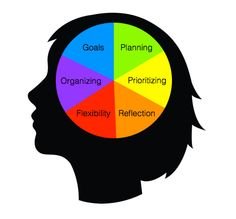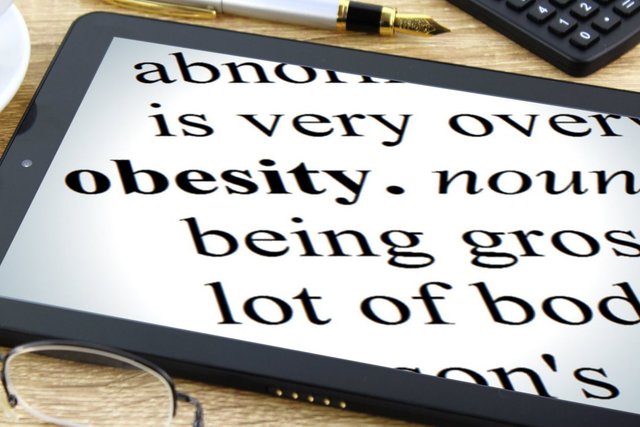In the 1950’s binge eating was first described by Stunkard (1959). Binge eating is seen as disturbed eating behavior, which is a key symptom of various eating disorders, such as bulimia nervosa (BN) and binge eating disorder (BED) (Duchesne, Mattos, Appolinario, de Freitas, Coutinho, Coutinho & Santos, 2010). According to the Diagnostic Manual of Mental Disorders (DSM-IV; APA, 1994), people who suffer binge eating, consume larger amounts of food in a fixed time compared to healthy people under similar conditions. Persons who binge eat are not able to control their eating habits.

BED is not included in the DSM-IV as a formal diagnosis, but categorized as 'eating disorders not otherwise specified’ (ED-NOS) within the group of eating disorders (Manwaring, Hilbert, Wilfley, Pike, Fairburn, Dohm & Striegel-Moore, 2006, Wonderlich, Gordon, Mitchel. Crosby & Engel, 2009; Dingemans, Bruna & van Furth, 2002; Hudson, Hiripi, Pope & Kessler, 2007).However, BED will appear in the DSM-V as a seperate diagnosis, which must result in an acknowledged and recognized psychiatric disorder. The lifetime prevalence of BED as classified in the DSM-IV is about 3 % among women and 2% among men (Hudson et al, 2007). Several studies (Kelly et al., 2007; Binford, Mussel, Peterson and Crow & Mitchell, 2004) found that psychosocial determinants such as low self-esteem, body dissatisfaction and depression may be risk factors of the disorder. Furthermore, Westerterp & Speakman (2008) described that environmental factors including stress, mood disorders, substance abuse, abandonment by parents, body weight-related harassment and demanding parents may enhance the development of BED.

Stress seems to amplify the rewarding properties of food, which may initiate or strengthen binge eating patterns (Striegel- Moore, Dohm, Kraemer, Schreiber, Taylor & Daniels, 2007). Binge eating episodes are comparable between individuals with BED and BN. A major difference between individuals with BED and BN is that individuals with BED do not have inadequate compensatory behaviors (vomiting, laxatives, excessive exercise and/or fasting), like individuals with BN (Dingemans et al, 2002). After a binge eating episode, people with BED often experience feelings of disgust, guilt and depression (American Psychiatric Association [DSM-IV-TR], 1994). The prevalence of BED seems to increase with the degree of obesity (Dingemans et al, 2002 & Dingemans & Van Furth, 2012). De Zwaan (2001) found that there was a strong correlation between BED and severe obesity.

Sources PART1
Dingemans, A.E., Bruna, M.J. & Van Furth, E.F. (2002). Binge eating disorder: a review. International Journal of Obesity, 26, 299-307.
Duchesne M., Mattos P., Fontenelle L.F., Veiga H., Rizo L. & Appolinario J.C. (2004). Neuropsychology of eating disorders: a systematic review of the literature. Revista Brasileira de Psiquiatria, 26(2), 107-17.
Duchesne, M., Mattos, P., Appolinario, J.C., de Freitas, S.R., Coutinho, G., Santos & C., Coutinho, W. (2010). Assessment of executive functions in obese individuals with binge eating disorder. Revista Brasileira de Psiquiatria,. 32(4), 381-8
Heatherton, T.F. & Baumeister, R.F. (1991). Binge eating as escape from self-awareness. Psychological Bulletin, 110, 86-108.
Hudson, J.I., Hiripi, E., Pope, H.G. & Kessler, R.C. (2007). The prevalence and correlates of eating disorders in the national comorbidity survey replication. Biological Psychiatry, 61, 348-358.
Kelly, N.R., Bulik, C.M. & Mazzeo, S.E. (2013). Executive functioning and behavioural impulsivity of young women who binge eat. International Journal of Eating Disorders. DOI: 10.1002/eat.22096.
Manwaring, J.L., Hilbert, A., Wilfley, D.E., Pike, K.M., Fairburn, C.G. Dohm, F-A. & Striegel-Moore, R.H. (2006). Risk factors and patterns of onset in binge eating disorder. International Journal of Eating Disorders, 39, 101-107.
Stunkard, A.J. (1959). Eating patterns and obesity. Psychiatric Quarterly, 33, 284-295.
Westerterp, K.R. & Speakman, J.R. (2008). Physical activity energy expenditure had not declined since the 1980’s and matches energy expenditure of wild mammals. International Journal of Obesity, 32, 1256-1263.
Wonderlich, S.A., Gordon, K.H., Mitchell, J.E., Crosby, R.D. & Engel, S.G. (2009). The validity and clinical utility of binge eating disorder. International Journal of Eating Disorders, 42, 687-705.
